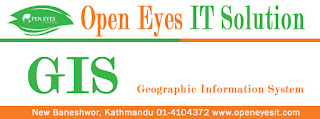 |
| GIS Trainining in Kathmandu Nepal |
Accurate data is essential to produce GIS maps and analysis results that support informed decision making. This course teaches methods for accurately creating and maintaining data stored in a geodatabase. You will learn a recommended workflow for data automation and practice with tools and techniques that help ensure data integrity during editing.
Editing Data With ArcGIS For Desktop Course Objectives
» Apply a standard editing workflow to manage updates to your GIS database.
» Efficiently create and edit feature geometry and attributes.
» Solve common data alignment issues.
» Maintain spatial relationships among features using topology.
Editing Data With ArcGIS For Desktop Course Outline
 |
| GIS Trainining in Kathmandu Nepal |
1.Basic editing workflow
- Lesson introduction
- What is your current editing workflow?
- ArcGIS for Desktop editing workflow
- Steps in the editing workflow
- Exercise 1: Implement the basic editing workflow
- Start editing
- Digitize visually
- Modify a feature
- Create a feature
- Lesson review
 |
| GIS Trainining in Kathmandu Nepal |
2.Preparing to edit
- Lesson introduction
- Overview: Preparing to edit
- Data storage and coordinate system
- Georeferencing rasters
- Enabling editor tracking
- Exercise 2A: Assemble and prepare data
- Add georeferencing layers and prepare the map document
- Georeference a raster
- (Optional) Fit an image to the display
- (Optional) Georeference an image using your own control points
- Enable editor tracking
- Author a map
- Evaluate a map for editing
- Setting ArcMap properties for editing
- Editing maps and apps
- Sharing maps and layers
- Map and layer packages
- Creating a map package
- Exercise 2B: Author a map for editing
- Add data layers to your map
- Set ArcMap properties
- Set layer properties
- Create and manage feature templates
- Share your map
- Lesson review
3.Editing geometry
- Lesson introduction
- Challenges in editing geometry
- Controlling features during editing
- Editing shared features
- Maintaining coincidence
- Exercise 3: Create and modify features
- Construct features visually
- Modify existing features
- Modify edges using map topology
- Reshape edges using map topology
- Align edges using map topology
- Lesson review
4.Editing attributes
- Lesson introduction
- Features are geometry plus attributes
- Attribute assignment methods
- Attribute domains
- Field calculations
- Choose an attribute assignment method
- Exercise 4: Apply methods for assigning attributes
- Prepare for editing
- Assign attributes interactively
- Create feature templates
- Add points using the new feature templates
- Find and replace attribute values
- Calculate fields
- Combine attribute values
- Calculate geometry
- (Optional) Export to a new feature class
- Lesson review
 |
| GIS Trainining in Kathmandu Nepal |
5.Data integration and quality control
- Lesson introduction
- Data integration considerations
- Creating and using a temporary feature class
- Ensuring the quality of your spatial data
- Integrating data using geodatabase topology
- Comparing topologies
- Choosing a topology
- Exercise 5: Ensure data integrity and integrate data
- Build a new topology
- Validate the topology
- Evaluate topology errors
- Resolve topology errors
- Use editing tools to fix errors
- Mark multiple errors as exceptions at once
- Lesson review
6.Data integration and data alignment techniques
- Lesson introduction
- Identifying causes of alignment issues
- Resolving alignment issues
- Exercise 6: Integrate and align data
- Explore and validate topology
- Review boundary errors
- Review land trust errors
- Resolve errors using Align Edge
- Resolve misaligned boundaries
- Resolve polygon gaps
- Resolve overlapping polygons
- (Optional) Resolve long boundary issues
- Automating data integration and editing
- Lesson review
 |
| GIS Trainining in Kathmandu Nepal |
7.Implementing the editing workflow
- Lesson introduction
- Evaluate editing problems
- Exercise 7: Apply the editing workflow
- Prepare for editing
- Edit centerlines
- Add features using survey measurements
- Create attributes
- Create a feature by tracing
- Extend and trim lines
- Create attributes
- Digitize a polygon
- Use a topology to discover errors
- Fix errors
- Update the geodatabase
- Prepare roads for editing
- Continue a line feature
- Reshape a feature
- Create a line feature
- Update lines
- Create point features
- Identify and correct attribute errors
- Align a polygon boundary
- Change attribute values using Python
8.Lesson review

No comments:
Post a Comment